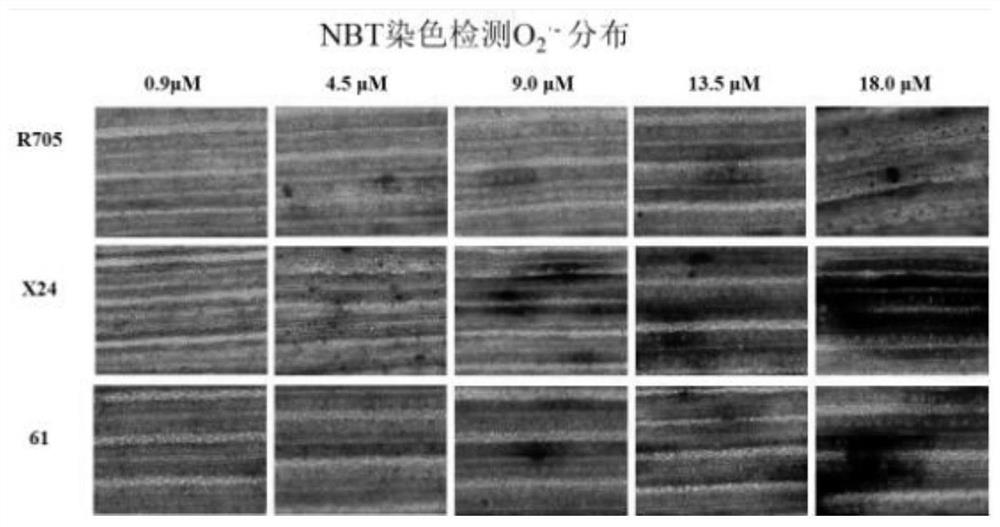Method for rapidly identifying cadmium sensitivity of rice by using fluorescent staining technology
A fluorescent dyeing and sensitivity technology, applied in the directions of fluorescence/phosphorescence, material analysis by optical means, measuring devices, etc., can solve the problems of poor accuracy, low efficiency and large error of rice cadmium sensitivity, and achieve short detection time, The effect of high efficiency and high work efficiency
- Summary
- Abstract
- Description
- Claims
- Application Information
AI Technical Summary
Problems solved by technology
Method used
Image
Examples
Embodiment 1
[0033] like Figure 1-2 As shown, the embodiments of the present invention provide a method for quickly identifying rice cadmium sensitivity using fluorescent staining technology, comprising the following steps:
[0034] S1. Coercion treatment
[0035] The detached leaves of different rice genotypes were cut and put into different test tubes, and the same amount of cadmium solution was added dropwise to the test tubes until the detached leaves were submerged. The detached leaves were soaked for 48 hours, and the detached leaves were treated in the cadmium solution. Stress treatment, mesophyll cells release a large amount of reactive oxygen species (ROS), under the catalysis of enzymes,
[0036] Active oxygen reacts with fluorescein to form a fluorescent compound;
[0037] S2. Microscope observation
[0038] Take out the detached leaves in the test tube and place them under a fluorescence microscope to observe the fluorescence intensity and distribution characteristics in th...
Embodiment 2
[0054] Such as Figure 1-2 As shown, the embodiments of the present invention provide a method for quickly identifying rice cadmium sensitivity using fluorescent staining technology, comprising the following steps:
[0055] S1. Coercion treatment
[0056] The detached leaves of different rice genotypes were cut and put into different test tubes, and the same amount of cadmium solution was added dropwise to the test tubes until the detached leaves were covered, and the detached leaves were soaked for 6 hours, and the detached leaves were treated in the cadmium solution Under stress treatment, mesophyll cells release a large amount of reactive oxygen species (ROS), and under the catalysis of enzymes, reactive oxygen species react with luciferin to form fluorescent compounds;
[0057] S2. Microscope observation
[0058] Take out the detached leaves in the test tube and place them under a fluorescence microscope to observe the fluorescence intensity and distribution characterist...
PUM
 Login to View More
Login to View More Abstract
Description
Claims
Application Information
 Login to View More
Login to View More - R&D
- Intellectual Property
- Life Sciences
- Materials
- Tech Scout
- Unparalleled Data Quality
- Higher Quality Content
- 60% Fewer Hallucinations
Browse by: Latest US Patents, China's latest patents, Technical Efficacy Thesaurus, Application Domain, Technology Topic, Popular Technical Reports.
© 2025 PatSnap. All rights reserved.Legal|Privacy policy|Modern Slavery Act Transparency Statement|Sitemap|About US| Contact US: help@patsnap.com


